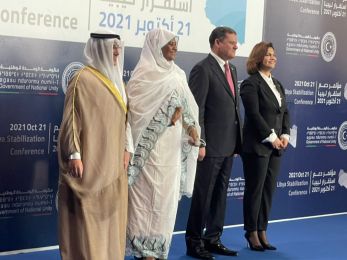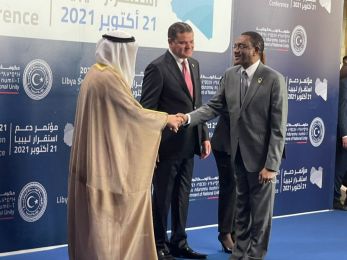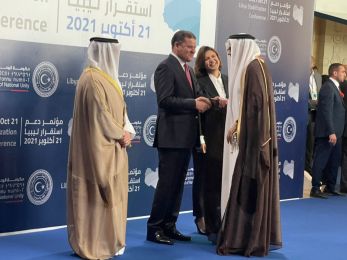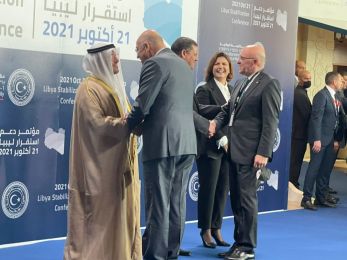DRC leader opens pandora box in Eastern Africa - ISS report
Kinshasa, DR Congo (PANA) - Tensions are spiking once again in the chronically turbulent eastern Democratic Republic of Congo (DRC) where the M23 rebel movement – widely thought to be long dead – has dramatically resurrected.
DRC President Félix Tshisekedi has accused Rwandan President Paul Kagame of again backing it with military support, the South Africa-based Institute for Studies (ISS) reported on Thursday, with reference to experts who say the crisis is the result of both internal DRC and external regional geopolitical causes.
After the M23 took Goma, the capital of North Kivu province, back in 2012, the region and the international community sat up and took notice, mobilizing against it.
The United Nations (UN) Force Intervention Brigade, comprising South African, Tanzanian and Malawian battalions, was added to the United Nations Organization Mission in the Democratic Republic of the Congo.
But it had a more aggressive mandate to eliminate ‘negative forces’. It defeated the M23, and its fighters fled to Rwanda and Uganda.
Meanwhile, the United States, United Kingdom and other intelligence services found indisputable evidence of Rwandan support for the M23.
Former US President Barack Obama called Kagame to tell him to back off – as Jason Stearns, director of the Congo Research Group, told the Center for Strategic & International Studies on 10 June.
But the M23 were never dealt with, he noted. Either its members should have been arrested for their crimes in eastern DRC or brought back to DRC and properly reintegrated into the army or society. Neither happened.
According to the ISS, they have returned to cause mayhem, though as Stearns pointed out not as much as in 2012/13, even if they recently took the small town of Bunagana on the Ugandan border.
The external trigger of the upsurge of tensions, most experts seem to agree, was that in November last year Tshisekedi signed a deal with Ugandan President Yoweri Museveni. It allowed him to send in his army to pursue the Islamic State-affiliated Allied Democratic Forces (ADF), which had just carried out a series of bombings in Kampala and elsewhere in Uganda that killed nine people.
The ADF is a particularly brutal rebel group originally from Uganda now based largely in eastern DRC.
As Paul-Simon Handy, ISS regional director for East Africa and the Horn, points out, the deal with Museveni also included contracts to Uganda to build several roads in eastern DRC.
At the same time Tshisekedi struck a similar deal with Burundian President Évariste Ndayishimiye allowing him to send his troops in to hunt down his Red-Tabara rebel enemies also based in eastern DRC.
These deals ‘may have opened the Pandora’s Box,’ the International Crisis Group says. There also seem to have been a spectacular backfire. Because Handy noted that Tshisekedi had been trying hard to patch up relations with his eastern neighbours – which had been strained under his predecessor Joseph Kabila – ever since he took office in January 2019.
He seemed to be succeeding.
“For Kagame, seeing Ugandan troops being deployed rang alarm bells,” Handy said. And not only the troops but also the commercial deals his rival Museveni had won. “Because Rwanda has enormous stakes in eastern DRC,” he said.
Gold is the largest export of both Rwanda and Uganda – and almost all of this is mined in the DRC.
However, Handy noted that Rwanda’s economic interests extended well beyond gold and other mineral resources, to include also, for example, telephone and transport businesses.
So Handy believes that Kagame saw his economic, military and political sphere of influence, as he regards it, being encroached on both sides from the north and the south.
He felt that Rwanda’s security concerns weren’t sufficiently taken care of in the eastern DRC as his rebel enemies there, the Democratic Forces for the Liberation of Rwanda (FDLR), seemed to be gaining traction.
Handy observed that blaming only Rwanda was the easy way out. The DRC must share some of it for failing to implement any of the peace agreements it had signed with the M23 since 2013 and so had not offered the group a path to peace.
He said it was important to remember that the M23 was a Congolese group, even if it comprised ethnic Rwandan speakers.
The ultimate underlying problem, as Stearns emphasized, was the weakness of the DRC state, which denied its control over its own territory and forced it to make compromising military deals like those with Uganda and Burundi that triggered the current crisis.
That though is a fundamental reality that is not going to disappear soon, so has to be worked around. And so the International Crisis Group proposed that Tshisekedi now rethink the Ugandan and Burundian deals, including by circumscribing their missions more precisely.
But this raises a difficult question: if Tshisekedi is going to outsource his state’s supposed monopoly of the use of force, to Uganda and Burundi, should he also do so to Rwanda to enable it to pursue the FDLR? Would it take that to placate Kagame?
The international community that sat up and took notice in 2012 is now distracted by more pressing issues, such as Russia’s war against Ukraine.
This week Kagame is hosting the Commonwealth Heads of Government Meeting, a sign of his self-assurance and that the international community isn’t alarmed by his manoeuvres.
The region, though, is paying more attention.
The DRC recently joined the East African Community (EAC), and in May it convened the first collective effort to try to negotiate peace with the many eastern DRC armed groups in Nairobi.
But this went nowhere, partly because the only significant rebel group invited was the M23 – and it pulled out because Tshisekedi would not talk to it, according to Stearns.
On Monday, this week, the EAC heads of state decided at a summit in Nairobi to immediately deploy a regional force to eastern DRC to ‘seek to stabilize and secure the peace.’
ISS chairperson Jakkie Cilliers finds it “promising … that, for the first time that I can recall, it’s the region trying to resolve their problem instead of outsiders, which is critical”. However the proposal has also raised several questions. For one, the DRC insisted that Rwanda be not part of the force. The communique from the summit didn’t address that demand either way.
Players with stakes in the eastern DRC must come together to coordinate a viable path to peace.
Another question is how would the EAC force work with the Force Intervention Brigade? The Southern African Development Community (SADC), of which DRC is a member, was the driving force behind the brigade back in 2013 and originally constituted all its troops.
SADC – and the UN – both appear to have been left out of the loop in the EAC’s planning and decision making on how to deal with the eastern DRC problem.
Handy also suggests that Kenyan President Uhuru Kenyatta was driving this EAC initiative and that no small part of his motivation was to seek commercial opportunity for Kenya in eastern DRC.
Which will in turn only alarm Kagame even more, and to some extent also Museveni.
Clearly, at the very least, as ISS Peter Fabricus summed up, what is called for here is for the multitude of players with stakes in the troubled eastern DRC to sit around the same table to coordinate a viable path to peace.
This includes at least the EAC, SADC, the Economic Community of Central African States, the UN and the African Union.
-0- PANA AR/RA 23June2022






